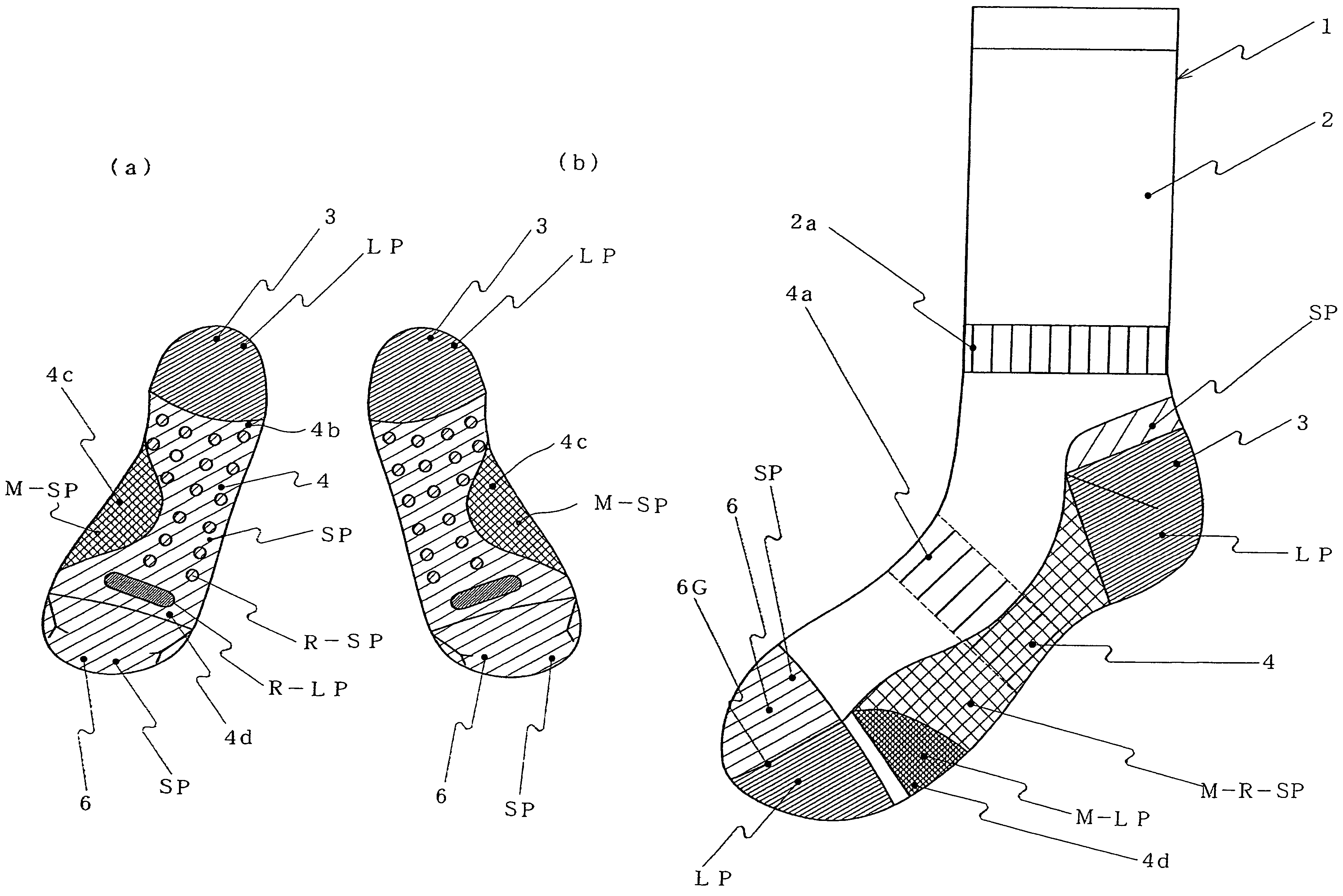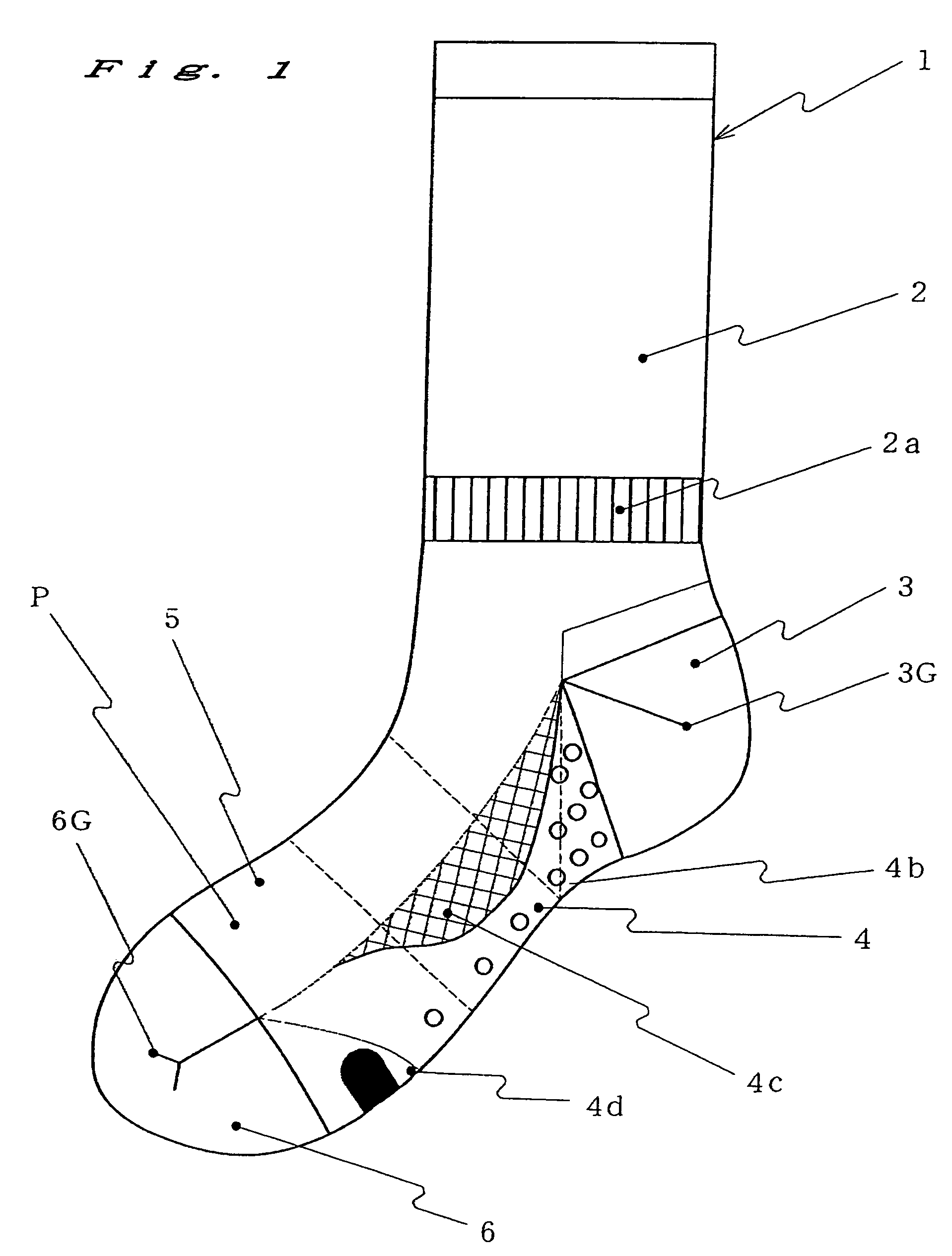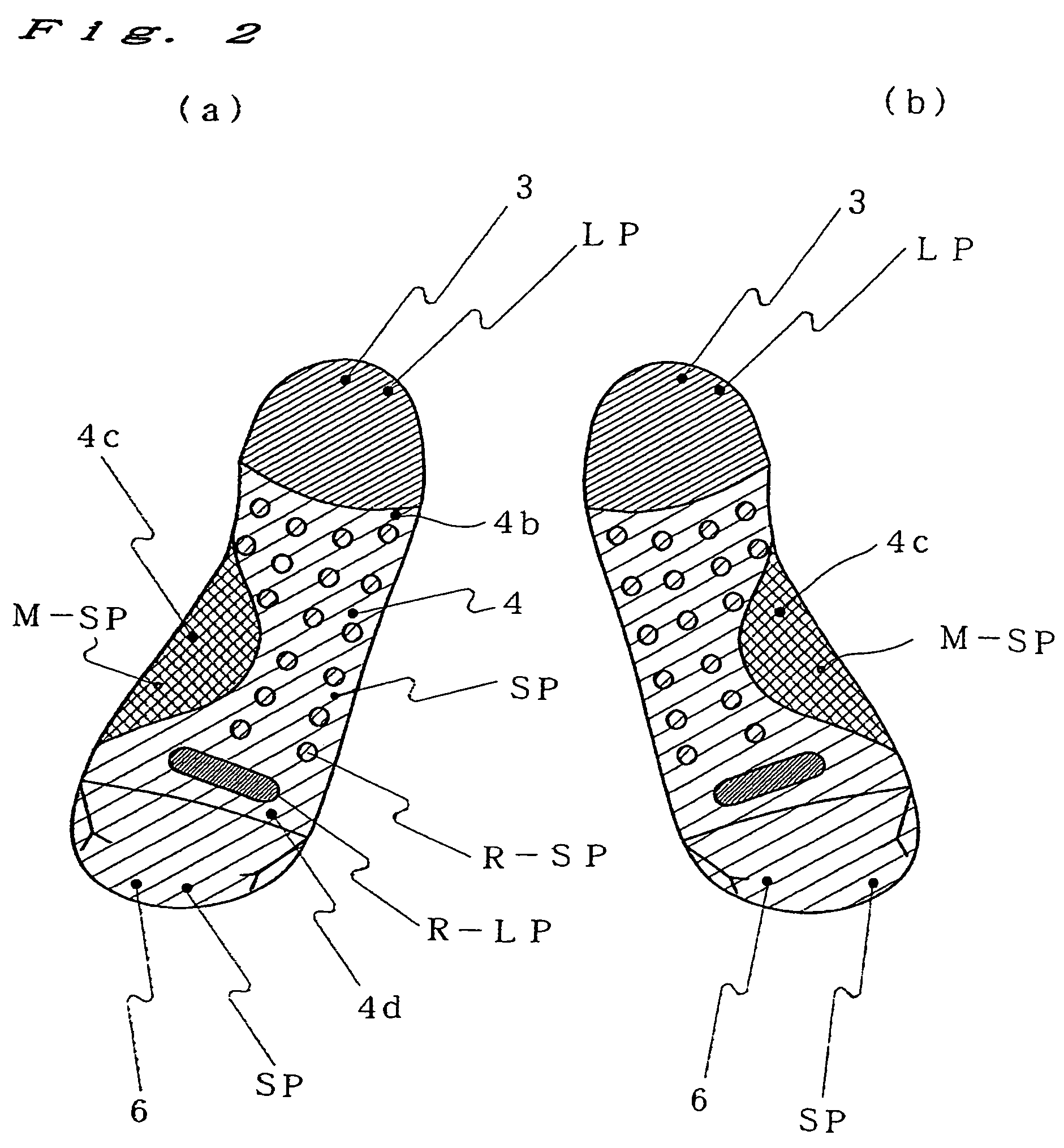Socks of multi-stage pile structure
a pile structure and multi-stage technology, applied in the field of socks, can solve the problems of not being able to provide cushion performance, being subjected to different degrees of shock, and feeling steamy, and achieve the effects of reducing shock, facilitating sweat absorption and transpiration, and reducing the feeling of swea
- Summary
- Abstract
- Description
- Claims
- Application Information
AI Technical Summary
Benefits of technology
Problems solved by technology
Method used
Image
Examples
Embodiment Construction
[0036]The best mode of carrying out the present invention will now be explained by reference to an example.
[0037]Let us assume making a sock using a plain-stitch fabric having a thickness of 1. A long-terry stitch LP portion having a thickness of 2.5 to 3.5 and a short-terry stitch SP portion having a thickness of 1.5 to 2.4 are distributed at the heel portion 3, sole portion 4 and toe portion 6 according to the distribution of the ground-touching pressures of the sock 1. A mesh portion M and a terry stitch portion that is thicker than the long-terry stitch LP portion and incorporating reinforcement yarn Y3 are arranged on the sole portion 4 according to the ground-touching pressure and shock distribution as well as in order to ensure ventilation for the sock 1. By distributing portions of different thicknesses as in this example, it is possible to make a sock that suits different purposes and seasons.
[0038]FIG. 1 is a side view of a sock of the present invention. FIG. 2 is a plan v...
PUM
 Login to View More
Login to View More Abstract
Description
Claims
Application Information
 Login to View More
Login to View More - R&D
- Intellectual Property
- Life Sciences
- Materials
- Tech Scout
- Unparalleled Data Quality
- Higher Quality Content
- 60% Fewer Hallucinations
Browse by: Latest US Patents, China's latest patents, Technical Efficacy Thesaurus, Application Domain, Technology Topic, Popular Technical Reports.
© 2025 PatSnap. All rights reserved.Legal|Privacy policy|Modern Slavery Act Transparency Statement|Sitemap|About US| Contact US: help@patsnap.com



